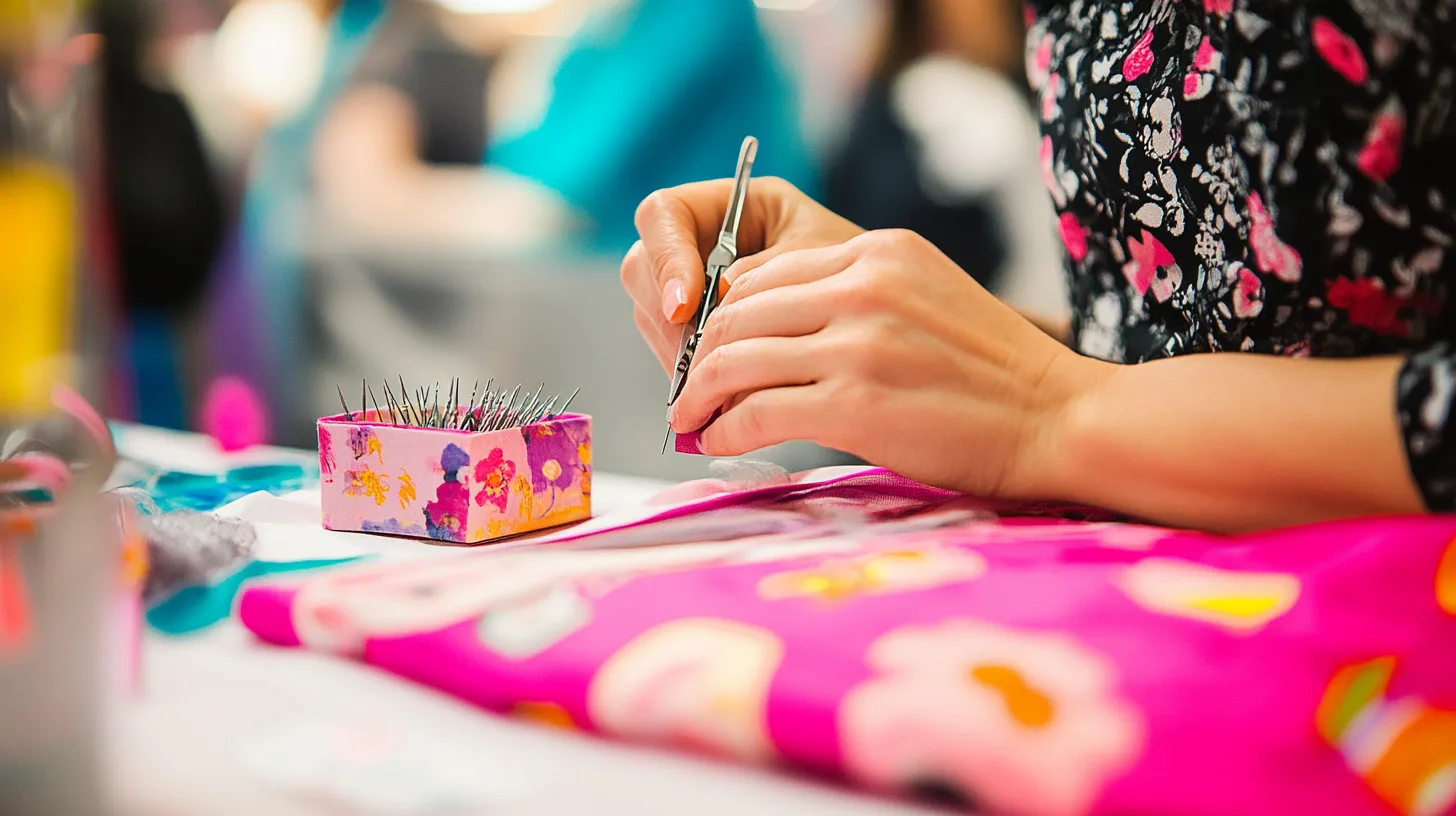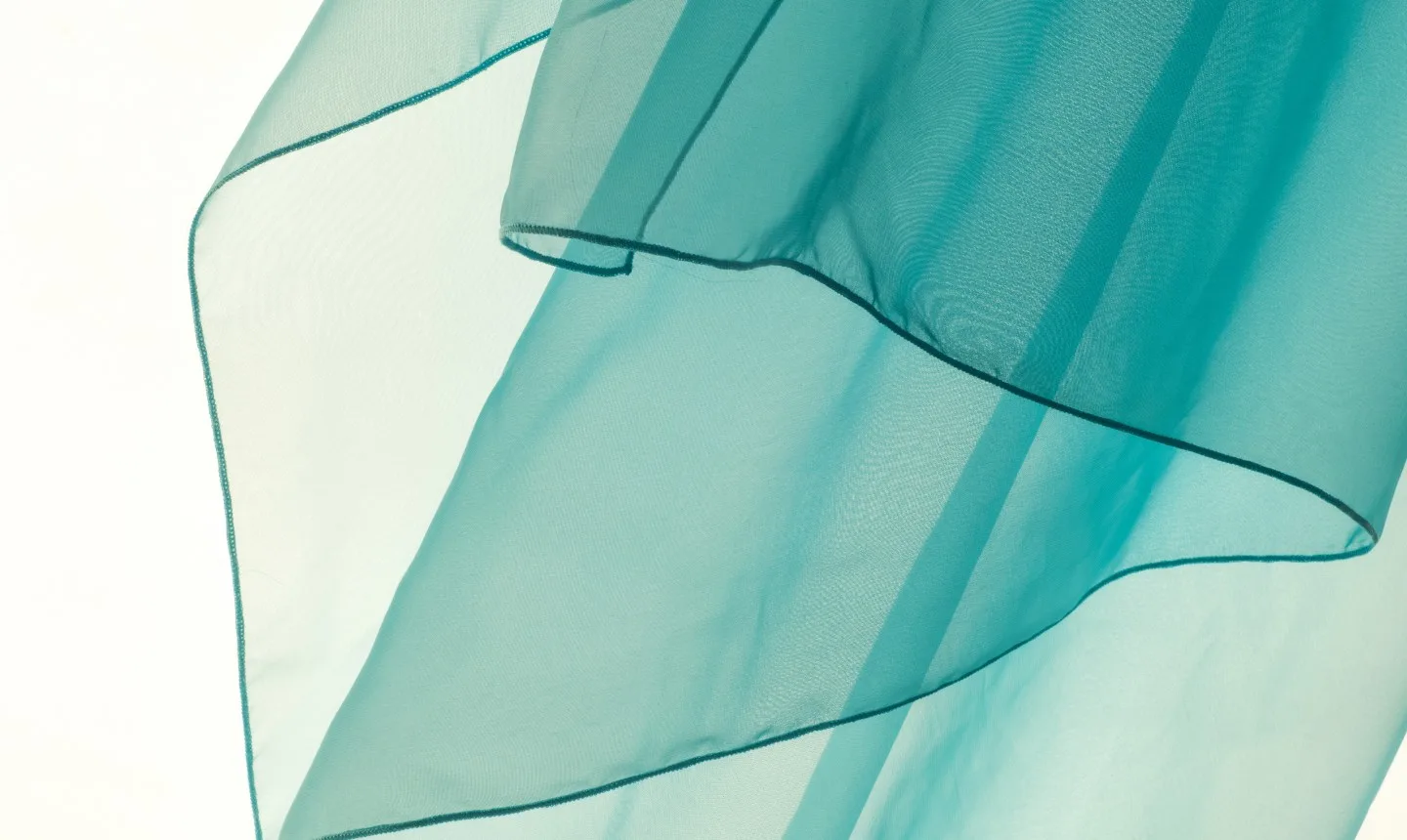Sewing chiffon can be a daunting task for many beginners, as the delicate and slippery nature of the fabric makes it challenging to work with. However, with the proper techniques and tools, you can master the art of sewing chiffon and create beautiful garments that showcase its ethereal qualities.
In this article, we'll discuss tips for sewing with chiffon fabric, as well as the best sewing machine settings and tools to use for successful results. Whether you're a beginner or an experienced sewer, this tutorial will help you navigate the intricacies of working with chiffon.
Key Takeaways
- Use a new, sharp needle (size 70/10 or Microtex) and set the stitch length to 12-20 stitches per inch.
- Place tissue paper or a lightweight stabilizer beneath the chiffon to prevent fabric shifting during cutting and sewing.
- Employ fabric weights or clips instead of pins to secure the chiffon without damaging it.
- Utilize tailor's tacks for precise marking without damaging the delicate fabric.
- Hem chiffon by folding raw edges twice and sewing close to the edge for a clean, neat finish.
What Is Chiffon Fabric?
Chiffon is a lightweight, sheer fabric known for its delicate drape and versatility. It can be made from natural fibers like silk and cotton or synthetic materials like polyester and nylon.
This delicate fabric is prone to fraying and requires specific cutting and sewing techniques. Its beautiful draping makes it ideal for formal wear but demands careful handling during construction.
Preparations Before Sewing Chiffon

Before you start sewing chiffon, make sure to pre-wash the fabric to avoid shrinkage later.
When cutting, use sharp scissors or a rotary cutter for clean edges.
Lastly, select the right needle and thread to prevent snags and ensure smooth stitching.
Pre-Wash Chiffon
Pre-wash your chiffon fabric to prevent any shrinkage that could distort the garment's fit and drape.
Use cold water and a gentle detergent to preserve the delicate fibers. Avoid fabric softeners, as they leave residues.
After pre-washing, hang it dry or lay the chiffon flat to maintain its shape.
This process ensures your fabric is ready for accurate cutting and sewing.
How to Cut Chiffon: Tips and Tricks
Once your chiffon is pre-washed and dried, you'll need to focus on accurate cutting techniques to ensure a successful sewing project.
Place tissue paper under your chiffon to prevent shifting.
Use sharp fabric scissors for clean edges and secure your pattern with weights, not pins, to avoid holes.
Cutting chiffon one layer at a time ensures accurate cuts and smooth results.
Choose the Right Needle and Thread
Choosing the right needle and thread is crucial for successfully sewing chiffon without causing damage to the delicate fabric.
Use a sharp needle, like a Microtex size 60/8 or 70/10, and fine polyester thread to prevent bulk.
Equip your machine with the smallest throat plate to avoid fabric snags.
Always test your needle and thread on a lightweight sheer scrap before starting.
How to Sew Chiffon: 9 Effective Tips

When sewing chiffon, pay attention to the following nine practical tips for a successful result.
1. Set Your Machine Properly
To ensure smooth stitching on chiffon, start by installing a new, sharp needle, like a size 70/10 universal or Microtex.
Adjust your sewing machine's tension settings and use the smallest throat plate to prevent the fabric from being pulled into the feed dogs.
Set the stitch length to 12-20 stitches per inch.
Test on scraps to fine-tune your settings for the best results.
2. Use Fabric Weights or Clips
Fabric weights and clips help keep chiffon steady during cutting and sewing, preventing damage and shifting.
Use fabric weights instead of pins to avoid holes in the delicate fabric. Position weights along the pattern edges to maintain alignment.
Employ lightweight clips to secure layers, ensuring fabric stability without adding bulk. Evenly distribute them to keep the fabric taut and edges even.
3. Use Tissue Paper or Stabilizer
Placing a layer of tissue paper or lightweight stabilizer beneath your chiffon can reduce fabric shifting and distortion during cutting.
Use a thin spray adhesive to keep the tissue paper or stabilizer in place, ensuring cleaner cuts and accurate pattern alignment.
Keep it in place during sewing to prevent puckering, then carefully tear it away from the seams without damaging the chiffon.
4. Mark Your Fabric Using Tailor's Tacks
When marking your chiffon, tailor's tacks provide a precise and delicate method that won't damage the fabric.
Use doubled cotton basting thread in a contrasting color to create loose running stitches along your marking lines. Snip the tops of the stitches to leave small loops.
This technique maintains the integrity of your delicate fabric, especially for marking darts and intricate areas without cutting notches.
5. Add a Lining
Lining your chiffon garment adds essential structure, opacity, and comfort without sacrificing its delicate flow.
Choose a lightweight lining fabric like silk or polyester. Align both fabrics smoothly, then sew using French seams or a narrow zigzag stitch to conceal raw edges.
Attach the lining at the neckline and armholes with bias tape for a clean, elegant finish.
6. Skip Back Tacking
Skip back tacking on chiffon to prevent visible holes and maintain the fabric's delicate appearance.
Instead, leave long thread tails and secure them with hand knots.
French seams will help conceal raw edges and provide a polished finish without back tacking.
7. Don't Pull or Stretch
To prevent puckering and distortion, gently guide the chiffon through the machine without pulling or stretching it.
Instead of pulling, let the needle do the work, ensuring smooth sewing.
This careful handling preserves the delicate fabric and maintains your chiffon project's integrity.
8. Hem Chiffon
Once you've carefully guided the chiffon through your machine, you can focus on creating a neat and elegant hem.
Start by pressing the raw edge up 1/4 inch, then sew 1/8 inch from the edge. Trim the raw edge close to the seam.
Fold and press another 1/4 inch, sewing 1/8 inch from the edge again for a narrow hem.
9. Pressing Techniques
When pressing chiffon, always use a low-temperature setting on your iron and test it on a scrap piece first.
Use a pressing cloth to shield the delicate fabric from direct heat. A steam iron helps gently remove wrinkles.
Troubleshooting Common Issues
When sewing chiffon, you might encounter issues like puckering, fraying edges, and static cling.
To address these, try adjusting your techniques using the following tips.
Deal with Puckering
Prevent puckering in chiffon by selecting a shorter stitch length, ideally between 12 to 20 stitches per inch, for better control and smoother seams.
Use a new, sharp Microtex needle to avoid fabric snags.
Adjust your presser foot pressure to ensure even feeding, and fine-tune the tension settings for optimal balance.
These adjustments will help you achieve a professional, puckering-free finish.
Handle Fraying Edges
Fraying edges on chiffon can often be managed effectively by applying Fray-Check or a similar fabric sealant to the raw edges before starting your sewing project.
Additionally, you can use a narrow zig-zag stitch to secure edges or opt for French seams to encase them.
Rolled hems provide a delicate finish, and cutting with sharp scissors helps prevent fraying from the start.
Deal with Static Cling
Static cling in chiffon can be a nuisance, but several effective methods can help you manage it.
Use an anti-static spray or rub a dryer sheet over the fabric before sewing.
Opt for a lightweight, moisture-wicking underlayer to absorb static.
Increasing humidity in your sewing area also helps.
Ensure your sewing machine is grounded to minimize static cling and ease your sewing process.
Conclusion
Sewing chiffon can be challenging, but with the proper techniques, you'll master it in no time.
Remember to prepare your sewing machine properly and handle the fabric with care. For precision, use fabric weights, tissue paper, and tailor's tacks. Skip back tacking and gently guide the chiffon to avoid puckering.
By following these tips, you'll achieve a beautiful, professional finish on your delicate projects.
Happy sewing!
Learn more fabric knowledge on the Longan Craft Blog, and dive into the fabric world with Longancraft!
FAQs
What Is the Best Stitch for Chiffon?
The best stitch for chiffon is a straight stitch set between 12 to 20 stitches per inch. This helps you control the fabric better and ensures seam strength without causing puckering, maintaining the chiffon's smooth appearance.
Is It Hard to Sew With Chiffon?
Yes, it can be hard to sew with chiffon due to its slippery nature and sheerness. You'll need patience, practice, and the right tools to handle and sew it effectively. Start with small projects to build confidence.
What Thread Can I Use for Chiffon?
For sewing chiffon, use very fine polyester or cotton thread, like Mettler Silk Finish Cotton (60 wt.) or YLI Silk thread (100 wt.). Match the thread color closely to the fabric to achieve a seamless finish.
How to Finish the Edge of Chiffon?
To finish chiffon edges, use narrow rolled hems or bias tape. Hand sewing offers precise control. Apply Fray-Check to prevent fraying. Try French seams for a neat, durable finish. Your chiffon will look polished and elegant.


0 comments